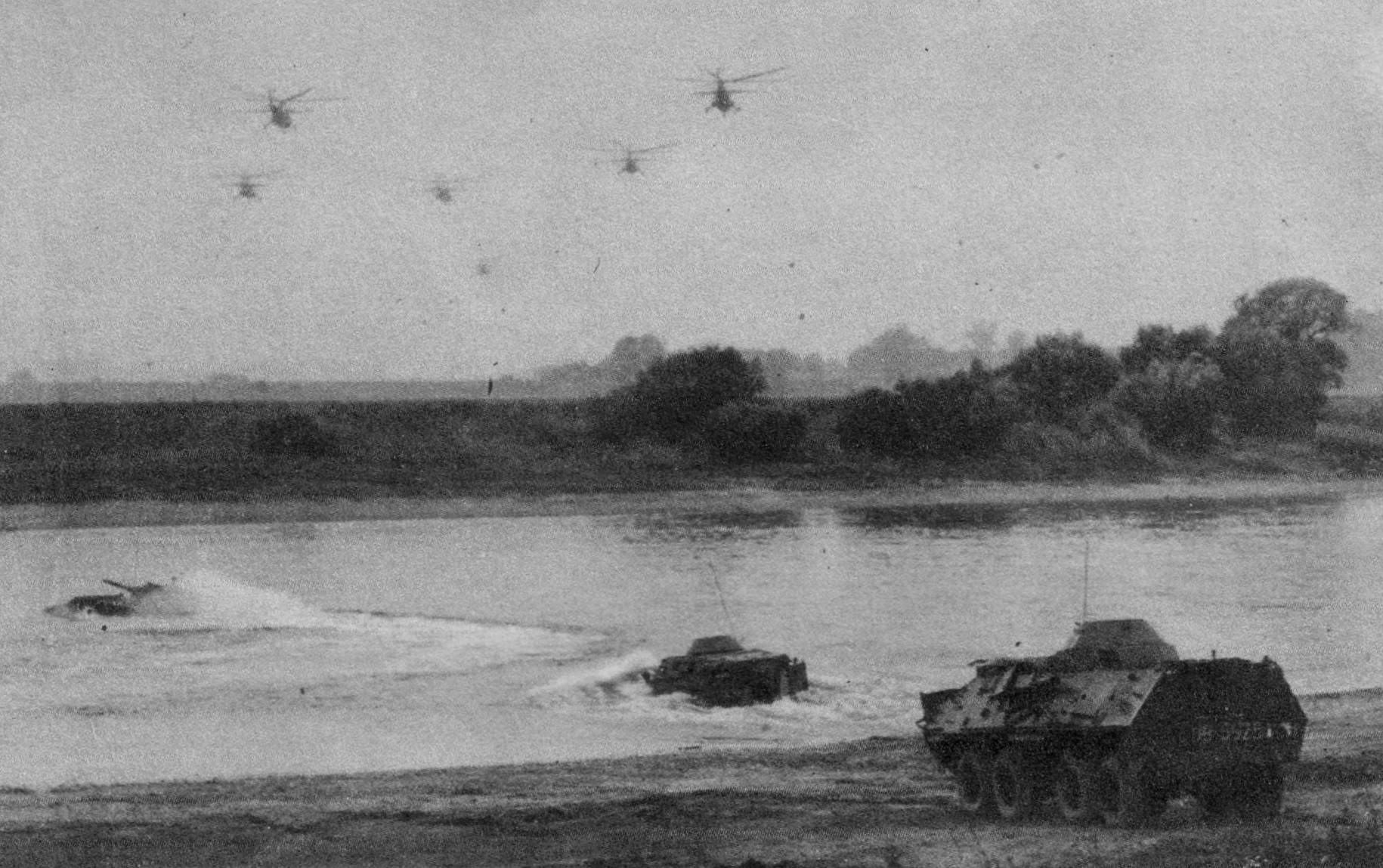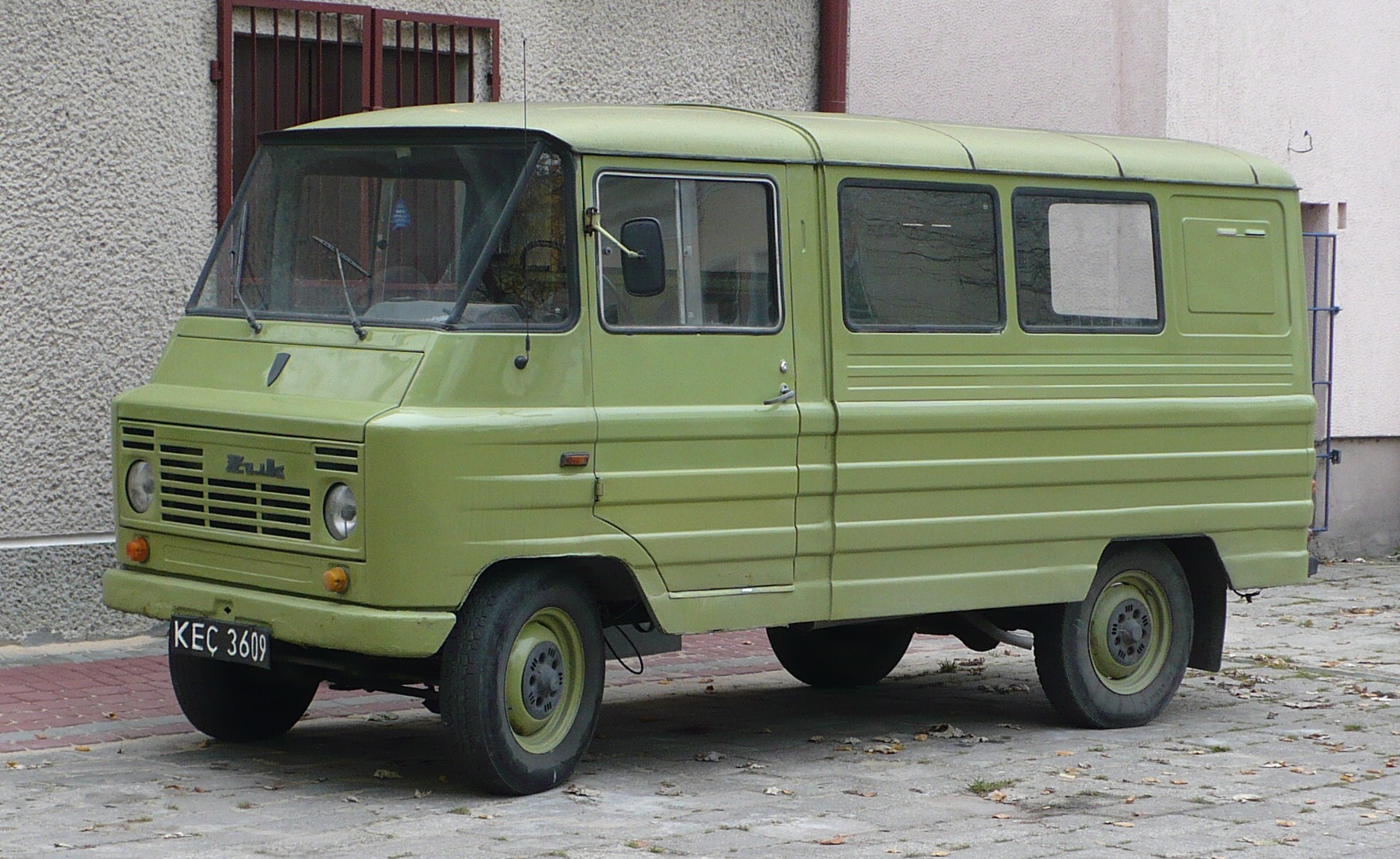|
OT-64
The OT-64 SKOT (Czech acronym for: ''Střední Kolový Obrněný Transportér'', and/or Polish Średni ''Kołowy Opancerzony Transporter'' – medium wheeled armoured transporter) is an amphibious, armored personnel carrier (8x8), developed jointly by Poland ( PRL) and Czechoslovakia ( ČSSR) well into the 1960s. Until the early 1970s Czechoslovakia and Poland produced around 4,500 OT-64 SKOTs of all variants, just under a third of which were exported.BURIAN, Michal; DÍTĚ, Josef; DUBÁNEK, Martin. OT-64 SKOT: historie a vývoj obrněného transportéru. 1. vyd. Praha: Grada, 2010.Kajetanowicz Jerzy, Transporter opancerzony SKOT i jego odmiany produkowane w Polsce, Zeszyty Naukowe WSOWL 2016, nr 2Kubiaczyk C., Transporter opancerzony SKOT, A. Karaś, W. Stefanowska (red.), J. Magnuski, Seria: Typy broni i uzbrojenia, vol. 9, Warszawa: Wydawnictwo Ministerstwa Obrony Narodowej, 1971 In 2002, the modernization of the SKOT transporter began in Poland. The work resulted in the KTO ... [...More Info...] [...Related Items...] OR: [Wikipedia] [Google] [Baidu] |
Tatra (company)
Tatra is a Czech vehicle manufacturer from Kopřivnice. It is owned by the ''Tatra Trucks'' company, and it is the third oldest company in the world producing cars with an unbroken history. The company was founded in 1850 as ''Ignatz Schustala & Cie'', in 1890 renamed in German ''Nesselsdorfer Wagenbau-Fabriksgesellschaft'' when it became a wagon and carriage manufacturer. In 1897, Tatra produced the first motor car in central Europe, the Präsident automobile. In 1918, it changed its name to ''Kopřivnická vozovka a.s.'', and in 1919 it changed from the Nesselsdorfer marque to the ''Tatra'' badge, named after the nearby Tatra Mountains on the Czechoslovak-Polish border (now on the Polish- Slovak border). During World War II Tatra was instrumental in the production of trucks and tank engines for the German war effort. Production of passenger cars ceased in 1999, but the company still produces a range of primarily all-wheel-drive trucks, from 4×4 to 18×18. The brand is also ... [...More Info...] [...Related Items...] OR: [Wikipedia] [Google] [Baidu] |
Operation Blue Star
Operation Blue Star was the codename of a military operation which was carried out by Indian security forces between 1 and 10 June 1984 in order to remove Damdami Taksal leader Jarnail Singh Bhindranwale and his followers from the buildings of the Golden Temple, the holiest site for Sikhs which is located in Amritsar, Punjab, India. The decision to launch the operation rested with the Prime Minister of India, then Indira Gandhi, who had already authorized military preparation for a confrontation at the temple complex 18 months prior according to the then- Vice Chief of the Army Staff, S. K. Sinha. In July 1982, Harchand Singh Longowal, the president of the Sikh political party Shiromani Akali Dal, had invited Bhindranwale to take up residence in the Golden Temple to evade arrest by government authorities. Indian intelligence agencies had reported that three prominent Sikh figures—Shabeg Singh, Balbir Singh and Amrik Singh, referred to in reports as "prominent heads of the K ... [...More Info...] [...Related Items...] OR: [Wikipedia] [Google] [Baidu] |
KTO Ryś
The KTO ''Ryś'' (''KTO'' for ''Kołowy Transporter Opancerzony'' - lit. ''Wheeled Armored Vehicle''; ''Ryś'' is Polish for '' Lynx'') is 8x8 multi-role military vehicle produced by Wojskowe Zakłady Motoryzacyjne S.A. (formerly ''WZM No. 5''), a Polish Armaments Group company. The vehicle was developed from the chassis and drive train of the OT-64 SKOT armored personnel carrier. Variants KTO ''Ryś''-Med Armored ambulance vehicle with crew of 3, capable to transport maximum of 4 injured in stretched position. This variant was adopted by Polish land Forces and fielded in Iraq and Afghanistan. KTO ''Azalia'' (''Azalia'' is Polish for '' Azalea'') - artillery command vehicle designed for Krab howitzers units. ZSRZ ''Kaktus'' (''ZSRZ'' for ''Zautomatyzowany System Rozpoznawczo-zakłócający'' - lit. ''Automatic Reconnaissance-Jamming System''; ''Kaktus'' is Polish for ''Cactus'') - electronic warfare system based on KTO Ryś. KTRI ''Tuja'' (''KTRI'' for ''Kołowy Transporter ... [...More Info...] [...Related Items...] OR: [Wikipedia] [Google] [Baidu] |
Tatra T138
The Tatra 138 was a truck produced in Czechoslovakia by the Tatra company. The immediate successor to the Tatra 111, the model introduced a number of new features while continuing the evolution of Tatra concept. The truck was produced from 1959 to 1971. History The decision to replace the Tatra 111 was made in 1952 as part of a central state planning economy, where Tatra Kopřivnice was to produce 7-10 ton utility trucks. In 1956 at II. Czechoslovak Machinery Expo in Brno, Tatra exhibited 2 new models, the T137 and T138. Both vehicles had up to 70% of parts in common across the range. New design features were introduced, such as improvement in driver environment and usability e.g. hydraulic power steering, a compressed air assisted clutch and electro-pneumatic auxiliary gearbox gear selection. Design and technology The design was of central backbone tube construction with modular power train concept in 4×4, 4×2, 6×6, 6×4 and 6×2 configuration. Version 4×2, 6× ... [...More Info...] [...Related Items...] OR: [Wikipedia] [Google] [Baidu] |
Armored Personnel Carrier
An armoured personnel carrier (APC) is a broad type of armoured military vehicle designed to transport personnel and equipment in combat zones. Since World War I, APCs have become a very common piece of military equipment around the world. According to the definition in the Treaty on Conventional Armed Forces in Europe, an APC is "an armoured combat vehicle which is designed and equipped to transport a combat infantry squad and which, as a rule, is armed with an integral or organic weapon of less than 20 millimetres calibre." Compared to infantry fighting vehicles (IFVs), which are also used to carry infantry into battle, APCs have less armament and are not designed to provide direct fire support in battle. Infantry units which travel in APCs are known as mechanized infantry. Some militaries also make a distinction between infantry units which use APCs and infantry units which use IFVs, with the latter being known as armoured infantry in such militaries. History The genesis o ... [...More Info...] [...Related Items...] OR: [Wikipedia] [Google] [Baidu] |
Armored Personnel Carrier
An armoured personnel carrier (APC) is a broad type of armoured military vehicle designed to transport personnel and equipment in combat zones. Since World War I, APCs have become a very common piece of military equipment around the world. According to the definition in the Treaty on Conventional Armed Forces in Europe, an APC is "an armoured combat vehicle which is designed and equipped to transport a combat infantry squad and which, as a rule, is armed with an integral or organic weapon of less than 20 millimetres calibre." Compared to infantry fighting vehicles (IFVs), which are also used to carry infantry into battle, APCs have less armament and are not designed to provide direct fire support in battle. Infantry units which travel in APCs are known as mechanized infantry. Some militaries also make a distinction between infantry units which use APCs and infantry units which use IFVs, with the latter being known as armoured infantry in such militaries. History The genesis o ... [...More Info...] [...Related Items...] OR: [Wikipedia] [Google] [Baidu] |
Fabryka Samochodów Ciężarowych
The FSC Lublin Automotive Factory ( pl, Fabryka Samochodów Ciężarowych) commonly known as FSC, is a large motor vehicle factory in Poland established while the country was part of the Soviet Bloc. It was founded in 1950. The first vehicle left its assembly line on November 7, 1951. The factory was built on an open field in Lublin from the grounds up, to first produce light trucks and later vans, as well as vehicles for the military. History After the 1989 collapse of the communist system in Poland, and the establishment of a free market economy, the state-owned FSC factory began to establish links with companies outside Poland. In 1995 the factory entered a joint venture with the South Korean conglomerate Daewoo. It soon become a part of the new company Daewoo Motor Polska. In December 1995 the factory started assembling Daewoo Nexia passenger cars. Around 40,000 were produced before production ended in 1998. Daewoo also began a joint project with British manufacturer LDV ... [...More Info...] [...Related Items...] OR: [Wikipedia] [Google] [Baidu] |
FSC Lublin Automotive Factory
The FSC Lublin Automotive Factory ( pl, Fabryka Samochodów Ciężarowych) commonly known as FSC, is a large motor vehicle factory in Poland established while the country was part of the Soviet Bloc. It was founded in 1950. The first vehicle left its assembly line on November 7, 1951. The factory was built on an open field in Lublin from the grounds up, to first produce light trucks and later vans, as well as vehicles for the military. History After the 1989 collapse of the communist system in Poland, and the establishment of a free market economy, the state-owned FSC factory began to establish links with companies outside Poland. In 1995 the factory entered a joint venture with the South Korean conglomerate Daewoo. It soon become a part of the new company Daewoo Motor Polska. In December 1995 the factory started assembling Daewoo Nexia passenger cars. Around 40,000 were produced before production ended in 1998. Daewoo also began a joint project with British manufacturer LDV ... [...More Info...] [...Related Items...] OR: [Wikipedia] [Google] [Baidu] |
BMP-1
The BMP-1 is a Soviet amphibious tracked infantry fighting vehicle, in service 1966–present. BMP stands for ''Boyevaya Mashina Pyekhoty 1'' (russian: link=no, Боевая Машина Пехоты 1; БМП-1), meaning "infantry fighting vehicle, 1st serial model". The BMP-1 was the first mass-produced infantry fighting vehicle (IFV) of the Soviet Union. It was called the M-1967, BMP and BMP-76PB by NATO before its correct designation was known. The Soviet military leadership saw any future wars as being conducted with nuclear, chemical and biological weapons. A new design, like the BMP, combining the properties of an armored personnel carrier (APC) and a light tank would allow infantry to operate from the relative safety of its armoured, radiation-shielded interior in contaminated areas and to fight alongside it in uncontaminated areas. It would increase infantry squad mobility, provide fire support to them, and also be able to fight alongside main battle tanks. The BMP- ... [...More Info...] [...Related Items...] OR: [Wikipedia] [Google] [Baidu] |
Polish People's Republic
The Polish People's Republic ( pl, Polska Rzeczpospolita Ludowa, PRL) was a country in Central Europe that existed from 1947 to 1989 as the predecessor of the modern Republic of Poland. With a population of approximately 37.9 million near the end of its existence, it was the second-most populous communist and Eastern Bloc country in Europe. It was also one of the main signatories of the Warsaw Pact alliance. The largest city and official capital since 1947 was Warsaw, followed by the industrial city of Łódź and cultural city of Kraków. The country was bordered by the Baltic Sea to the north, the Soviet Union to the east, Czechoslovakia to the south, and East Germany to the west. The Polish People's Republic was a socialist one-party state, with a unitary Marxist–Leninist government headed by the Polish United Workers' Party (PZPR). The country's official name was the "Republic of Poland" (') between 1947 and 1952 in accordance with the transitional Small Constitutio ... [...More Info...] [...Related Items...] OR: [Wikipedia] [Google] [Baidu] |





